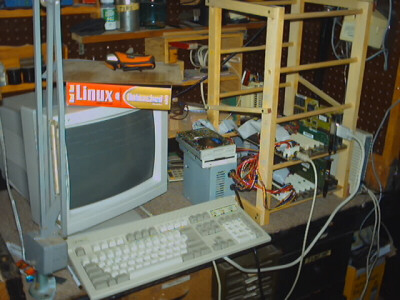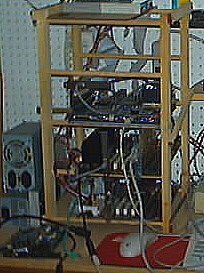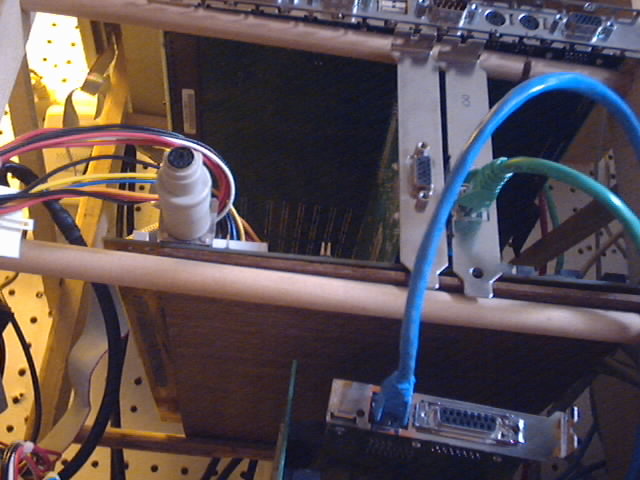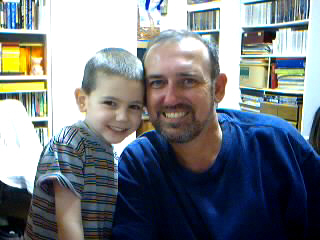WELCOME TO THE TERMITE TERMINAL
(Warning! Lots of big pictures to load!!)

The Termite Terminal is a stack of computer motherboards running SETI@HOME in ramdrives.
I began running Seti@home to make use of some old computers I had. Most were still in good condition but just collecting dust.
I heard about the SETI project from reading Carl Sagan's "Contact" and became interested in "stacks"
after visiting the SETI home page and Luke Mester's Brooke High Seti web site.
I named my stack after the little critters that almost ended the project before it started.
Out of a dozen four foot dowels I was only able to salvage enough ends to make this
one eighteen inch wide rack.
The pictures below are of the dowels that the motherboards rest on.


As you can see, even what the termites left me was well munched. They had a pretty good meal before I chased them off in the name of
SCIENCE!


The above pictures are of the early stages of assembly. The frame for the motherboards
is simply some old 1x2 molding and a few 3\8 inch ( termite nibbled ) dowels.
The left picture was during the testing phase to see if I could make some
of these old motherboards work. The right picture is the first stack of two socket 7's and a Pentium II.

The ethernet cards and video cards are free standing, that is, they are only held in place by the force of the sockets they are in.

The motherboards rest on the dowels without any fasteners.
This makes it easy to remove and replace them without any tools.

This is the stack with an old NEC Versa laptop (used for a few Windows applications I still have) sitting on the
Linux Box. I run two instances of Setiathome on the Linux Box and one each on the
motherboards.

A close up of the stack. Top is an AMD 166. Next is a Pentium 200 and next to last is a Pentium 233.
The bottom board is a Pentium 150
Each board has 32 Meg of ram. All were purchased at local resale shops for next to nothing.

The software I am running on the Linux Box was provided by SETI@HOME.
It is running over Suse 8.0 Professional.
The software running in ramdisk on the motherboards is from
Nigel Gibbs. by way of Luke Mester's Brooke High Seti web site. It is a variant of LRP.
With the exception of the Linux Box, all the software is running in ramdisk
with none of the motherboards having any hard drives.
The stack computers are routed through an ethernet hub and conected to a Thinconnect4 router.

The router is set for auto-dial so work units can be sent and recieved on demand.
A special thanks to Luke Mester for adding a link to my page on his site. Thanks Luke!

Who are these guys, anyway? Jackie (My pride and joy!)and
Bruce .
Last updated 03/03/04
Drop a line if you like this site. edwbr@juno.com